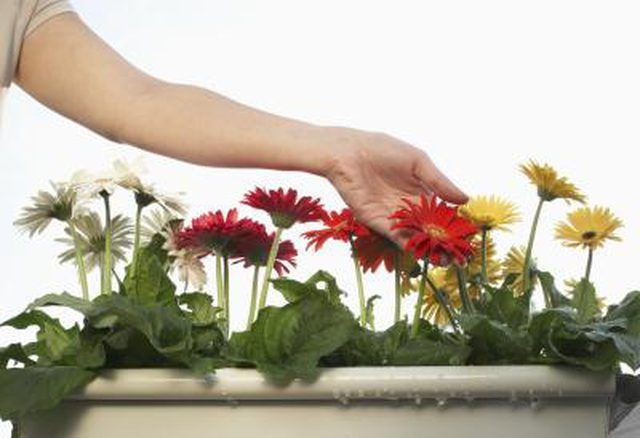Bulbs
Flower Basics
Flower Beds & Specialty Gardens
Flower Garden
Garden Furniture
Garden Gnomes
Garden Seeds
Garden Sheds
Garden Statues
Garden Tools & Supplies
Gardening Basics
Green & Organic
Groundcovers & Vines
Growing Annuals
Growing Basil
Growing Beans
Growing Berries
Growing Blueberries
Growing Cactus
Growing Corn
Growing Cotton
Growing Edibles
Growing Flowers
Growing Garlic
Growing Grapes
Growing Grass
Growing Herbs
Growing Jasmine
Growing Mint
Growing Mushrooms
Orchids
Growing Peanuts
Growing Perennials
Growing Plants
Growing Rosemary
Growing Roses
Growing Strawberries
Growing Sunflowers
Growing Thyme
Growing Tomatoes
Growing Tulips
Growing Vegetables
Herb Basics
Herb Garden
Indoor Growing
Landscaping Basics
Landscaping Patios
Landscaping Plants
Landscaping Shrubs
Landscaping Trees
Landscaping Walks & Pathways
Lawn Basics
Lawn Maintenance
Lawn Mowers
Lawn Ornaments
Lawn Planting
Lawn Tools
Outdoor Growing
Overall Landscape Planning
Pests, Weeds & Problems
Plant Basics
Rock Garden
Rose Garden
Shrubs
Soil
Specialty Gardens
Trees
Vegetable Garden
Yard Maintenance
How to Cure Gerbera Daisy Fungus
How to Cure Gerbera Daisy Fungus. Your Gerbera daisy (Gerbera Jamesonii) may succumb to powdery mildew when the weather cools near the end of the growing season. This infection can be caused by various fungi that thrive in damp conditions and spread their spores easily through air currents and splashing water droplets. While numerous chemical...

Your Gerbera daisy (Gerbera Jamesonii) may succumb to powdery mildew when the weather cools near the end of the growing season. This infection can be caused by various fungi that thrive in damp conditions and spread their spores easily through air currents and splashing water droplets. While numerous chemical preparations for powdery mildew are readily available, the combination of sound cultural practices and homemade canola oil fungicide may deliver even better results. Fungi donít build up resistance to oil fungicides as they quickly do with chemical preparations. This means that you can cure the Gerberaís fungus without the hassle or expense of repeatedly switching dangerous synthetic treatments. Hardy in U.S. Department of Agriculture plant hardiness zones 9 to 11, these colorful daisies are commonly grown as annuals in colder regions.
Things You'll Need
Clean, sharp shears
Plastic bag
Canola oil
Plastic container with lid
Liquid castile soap or non-degreasing liquid dish soap
Permanent marker
Baking soda
Spoon
Plastic spray bottle
Inspect your Gerbera daisyís flowers, leaves, stems and shoots daily for signs of powdery mildew, especially during the cooler months of fall and winter. Look carefully for powdery white patches or spots on all the plantís surfaces. Foliage eventually yellows or turns brown and dies. This fungal infection typically reduces growth, so the plant may appear stunted like itís in poor health in general.
Isolate the infected Gerbera from all of your other plants immediately to prevent the spread of the disease to healthy specimens. After a few months of diligent treatment, you should be able to return the sick Gerbera to its former happy home.
Hand pick all infected parts off the plant as soon as you see any white spots. Use clean, sharp shears to prune some of the stems from the center of the plant if itís extremely full. This encourages good air circulation, which powdery mildew isnít fond of. Put all the infected clippings in a plastic bag and tie it tightly shut. Dispose of the bag in the trash. Donít add sick foliage to your compost pile.
Add 1 cup of canola oil to a plastic container. Pour in 1 tablespoon of liquid castile soap or non-degreasing liquid dish soap to make a horticultural oil concentrate. Cap the lid firmly and shake the container briskly to blend the soap and oil. Write the formula clearly on the container with permanent marker. Store the oil concentrate in a dark, cool spot indefinitely.
Stir 1? teaspoons of baking soda into 1 cup of very hot water. Stir until the baking soda is completely dissolved. Pour the solution into a plastic spray bottle. Add 1? teaspoons of the oil concentrate. Shake vigorously to blend thoroughly. Use the mixture right away.
Spray the oil mixture generously on all surfaces of the Gerbera daisy to coat them to the point of runoff. Pay special attention to the undersides of the leaves, which tend to be overlooked. Agitate the sprayer after several spritzes to prevent the oil from separating from the water. The best time to treat powdery mildew is on a day when temperatures donít exceed 85 degrees Fahrenheit, thereís no breeze and no precipitation is in the forecast. Discard any unused solution. Repeat the application every four to six days for the rest of the growing season.
Keep the Gerbera daisyís foliage as dry as possible. Powdery mildew spreads and grows quickly on plant surfaces that remain moist for long periods of time. Donít splash water on the plantís foliage as this speeds and strengthens the spread of the fungus. Donít mist the infected plant for the remainder of the season.
Locate the Gerbera in a warm spot, preferably above 75 degrees. Space multiple plants as far apart as possible to increase the airflow. Provide all the bright sunlight possible. Poor air circulation, inadequate light and temperatures close to or below 70 F promote powdery mildew growth.
Tips & Warnings
The Environmental Protection Agency approves canola oil for pest and disease control in plants.
Wash your hands and sterilize your utensils right after you handle the infected Gerbera. This helps minimize the chances of spreading the fungus from plant to plant.
Test the spray solution on a small spot of the Gerbera before you apply it to the entire plant. If there is no sign of injury after two or three days, you can be sure itís safe to use to treat the daisy for powdery mildew.